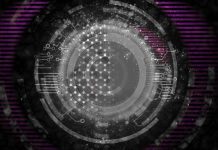Powerful mathematical model utilizes brain signal data collected from an electrical implant in patients
Epilepsy is one of the most common neurological conditions, affecting more than 65 million people worldwide. For those dealing with epilepsy, the approach of a seizure feels like a ticking time bomb. It could happen at any time or any place, potentially posing a fatal risk when a seizure strikes during activities such as driving or swimming.
A research team at the USC Viterbi School of Engineering and Keck Medicine of USC is tackling this dangerous problem with a powerful new seizure-predicting mathematical model that will give epilepsy patients an accurate warning five minutes to one hour before they are likely to experience a seizure, offering enhanced freedom for the patient and potentially reducing the need for medical intervention.
The research, published in the Journal of Neural Engineering, is led by corresponding authors Dong Song, research associate professor of biomedical engineering at USC Viterbi, and Pen-Ning Yu, a former PhD researcher in Song’s lab, in collaboration with Charles Liu, professor of clinical neurological surgery and director of the USC Neurorestoration Center. The other authors are Ted Berger, the David Packard Chair in Engineering and a professor of biomedical engineering at USC Viterbi, and Christianne Heck, medical director of the USC Comprehensive Epilepsy Program at the Keck Medical Center.
Model forecasts seizures up to one hour ahead of time
The mathematical model works by learning from large amounts of brain signal data collected from an electrical implant in the patient. Liu and his team have already been working with epilepsy patients with implantable devices, which are able to offer ongoing, real-time monitoring of the brain’s electrical signals in the same way as an electroencephalogram (EEG) uses external electrodes to measure signals. The new mathematical model can take this data and learn each patient’s unique brain signals, looking out for precursors or patterns of brain activity that show a “pre-ictal” state, in which a patient is at risk of seizure onset.
Song said the new model is able to accurately predict whether a seizure may happen within one hour, allowing the patient to take the necessary intervention.
“For example, it could be as simple as just alerting the patient their seizure is coming in the next hour, so they shouldn’t drive their car right now, or they should take their medicine, or they should go and sit down,” Song said. “Ideally, in the future we can detect seizure signals and then send electrical stimulation through an implantable device to the brain to prevent the seizure from happening.”
A path to better epilepsy management
Liu said that the discovery would have major positive implications for public health, given epilepsy treatment had been severely impacted in the past year by the pandemic.
“This is, hopefully, going to change the way we deal with epilepsy going forward,” Liu said. “It’s driven by the needs that have been in place for a long time but have been highlighted and accelerated by COVID.”
He added that currently, patients with medically intractable epilepsy — epilepsy that cannot be controlled with medication — are admitted electively to the hospital for video EEG monitoring. When the pandemic began, these elective admissions completely halted and epilepsy programs across the country ground to a halt. Liu said this highlights the need for a new workflow in which EEG recordings from scalp or intradural electrodes can be acquired at home and analyzed computationally.
“We need to create a new workflow by which, instead of bringing patients to the ICU, we take the recordings from their home and use the computation models to do everything they would have done in the hospital,” he said. “Not only can you manage patients using physical distancing, you can also scale in a way that only technology allows. Computation can analyze thousands of pages of data at once, whereas a single neurologist cannot.”
Originally published by
Amy Blumenthal, 917-710-1897 or amyblume@usc.edu; | Leigh Hopper, 310-308-0405 or lhopper@usc.edu | February 25, 2021
USC University of Southern California
Illustration via iStock.














